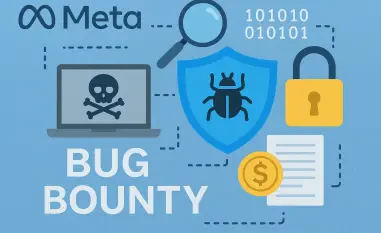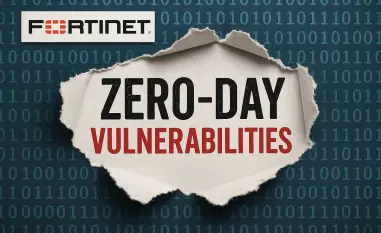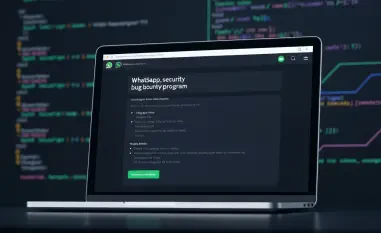This how-to guide aims to help developers and organizations successfully integrate vibe coding—an innovative approach using natural language to instruct large language models (LLMs) to generate code—into their workflows while prioritizing security. By following the structured steps and principles outlined, readers will learn how to harness the productivity benefits of AI-driven development without compromising on safety. The guide addresses the excitement of this technology alongside the critical need to mitigate inherent risks, offering practical strategies for a balanced approach.
The transformative potential of AI-assisted coding cannot be overstated, particularly in a landscape where speed and innovation are paramount. Imagine a scenario where a development team cuts prototyping time in half by simply describing their vision to an AI model, which then generates functional code in minutes. This is the promise of vibe coding, a method that empowers developers to focus on creativity rather than syntax. However, with such power comes a pressing challenge: ensuring that the generated code does not introduce vulnerabilities that could jeopardize entire systems. The purpose of this guide is to navigate this duality, providing actionable insights to maximize efficiency while embedding security at every stage.
The importance of addressing security in AI-driven coding is underscored by alarming industry trends. As adoption of these tools skyrockets, so do the risks, with studies showing that a significant percentage of AI-generated code contains flaws that could be exploited. This guide seeks to equip readers with the knowledge to implement vibe coding responsibly, ensuring that human oversight and proactive measures remain central to the process. By following the outlined steps, developers can confidently explore this new frontier, knowing they have the tools to safeguard their projects against potential threats.
Unveiling Vibe Coding: A New Era of AI-Driven Development
Vibe coding represents a groundbreaking shift in software development, where developers use natural language prompts to guide large language models in generating code. This approach has sparked enthusiasm across the industry, particularly for its ability to accelerate prototyping and support greenfield projects where fresh ideas are brought to life. The ease of translating concepts into functional code without deep manual effort offers a glimpse into a future where productivity reaches unprecedented levels, reshaping how teams approach complex challenges.
Beyond its immediate benefits, vibe coding signals a broader transformation in the role of developers, shifting their focus from routine coding tasks to strategic problem-solving. The excitement surrounding AI-assisted tools lies in their capacity to democratize programming, enabling even those with limited technical expertise to contribute meaningfully to projects. Yet, this innovation is not without pitfalls, as the reliance on AI introduces security risks that could undermine the very efficiency it promises, setting the stage for a critical examination of safeguards.
Acknowledging these risks, the path forward requires a balanced perspective that neither overestimates AI’s capabilities nor dismisses its potential. Human oversight emerges as an indispensable component, ensuring that generated code aligns with quality and safety standards. Moreover, integrating proactive security measures from the outset becomes essential to harnessing the advantages of vibe coding while minimizing exposure to vulnerabilities, a theme that will be explored in detail throughout this guide.
The Rise of AI in Coding: Why Security Can’t Be an Afterthought
The adoption of AI-assisted coding tools has surged dramatically, becoming a staple in the software development industry. Industry leaders have observed that nearly every developer now engages with these tools to some extent, marking a paradigm shift in how software is conceptualized and created. This rapid uptake reflects a collective recognition of AI’s ability to streamline workflows, particularly in environments where speed and adaptability are critical to success.
Despite this enthusiasm, the security implications of AI-generated code demand immediate attention. Reports indicate that vulnerabilities appear in nearly half of the tasks completed by AI tools, highlighting a significant gap in reliability. Such statistics serve as a stark reminder that while these tools enhance productivity, they also introduce risks that can compromise entire systems if left unchecked, necessitating a shift in mindset toward prioritizing safety.
This dual nature of AI as both an enabler and a risk factor underscores the urgency of embedding security into the development process from the very beginning. Experts advocate for a proactive stance, emphasizing that security cannot be relegated to a secondary concern addressed only after issues arise. Instead, it must be woven into the fabric of AI adoption, ensuring that innovation does not come at the expense of stability or trust in the resulting software.
Navigating Vibe Coding: Key Steps to Secure AI-Generated Code
To balance the innovative potential of vibe coding with the imperative of security, a structured approach is essential. The following steps provide a clear roadmap for developers and organizations to integrate AI-generated code into their workflows while mitigating associated risks. Each step is designed to address specific challenges, ensuring that safety remains a priority at every stage of development.
The process begins with establishing foundational principles and progresses to actionable strategies that can be implemented immediately. By adhering to these guidelines, teams can leverage the efficiency of AI tools without exposing their projects to undue vulnerabilities. The focus remains on creating a synergy between human expertise and automated capabilities, fostering a secure development environment.
These steps are not merely suggestions but critical components of a comprehensive strategy to navigate the complexities of vibe coding. From oversight to real-time protection, each element builds on the last, forming a cohesive framework that supports innovation while safeguarding against potential threats. Developers are encouraged to adopt these practices as part of their standard processes, ensuring long-term success.
Step 1: Establishing Human Oversight as the Foundation
Human involvement stands as the cornerstone of secure vibe coding, ensuring that AI-generated code undergoes thorough scrutiny before deployment. Experts stress that without a knowledgeable individual to review outputs, accountability for any security lapses becomes impossible to assign, as models lack the capacity to bear responsibility. This step emphasizes the need for consistent human intervention to validate the quality and safety of automated code.
Building Accountability Through Review Processes
Assigning skilled personnel to oversee AI outputs is a critical measure for maintaining organizational standards. These individuals must possess the expertise to identify potential flaws or misalignments in the generated code, ensuring it meets both functional and security requirements. Regular review processes create a culture of accountability, where every piece of code is vetted before integration into larger systems, reducing the likelihood of undetected issues.
Trust but Verify: The Human Judgment Factor
The philosophy of “trust but verify” captures the essence of human judgment in the context of AI tools. Even as these systems become more sophisticated, their outputs cannot be accepted at face value without confirmation from experienced developers. This approach ensures that while AI can accelerate certain tasks, the final decision-making rests with humans who can assess context and intent beyond the model’s capabilities.
Step 2: Securing at Inception with Proactive Measures
Embedding security into the development process from the very start is a vital strategy for preventing vulnerabilities in AI-generated code. Rather than addressing issues reactively, this step focuses on building safeguards into the tools and workflows that produce code. Industry leaders advocate for the use of agents and guardrails within AI systems to preemptively block common security pitfalls before they manifest.
Leveraging Tools for Real-Time Protection
Specialized solutions designed for real-time scanning and remediation play a pivotal role in securing code at inception. Products that offer immediate feedback on vulnerabilities enable developers to address issues as they arise, minimizing the risk of flawed code progressing through the development pipeline. These tools act as a first line of defense, ensuring that security is not an afterthought but an integral part of the coding process.
Preventing Security Debt Accumulation
The concept of security debt, where unaddressed vulnerabilities accumulate over time, poses a significant threat in AI-driven development. Proactive strategies are necessary to avoid this buildup, as delays in remediation can lead to costly breaches or system failures. By prioritizing early intervention, organizations can maintain a cleaner, safer codebase, reducing long-term risks associated with unchecked flaws.
Step 3: Anticipating AI Unpredictability with Immediate Testing
Given the inherent unpredictability of AI-generated code, immediate testing and remediation are crucial to catching errors early. This step acknowledges that while AI tools are powerful, they are not infallible, often producing outputs with subtle or significant flaws. Structured workflows designed to address these imperfections ensure that issues are identified and resolved before they escalate.
Designing Workflows for Rapid Response
Organizations must develop processes that anticipate vulnerabilities as an inevitable outcome of AI coding. By integrating rapid testing mechanisms into the development cycle, teams can quickly detect and correct errors immediately after code generation. This proactive stance minimizes the window of exposure, allowing for swift adjustments that keep projects on track without compromising security.
Adapting to AI’s Evolving Limitations
As AI tools continue to evolve, their limitations also shift, requiring constant adaptation from development teams. While improvements in accuracy and reliability are expected over time, complete dependability remains elusive, necessitating ongoing vigilance. Staying ahead of these changes involves regularly updating testing protocols to address new types of errors or risks introduced by advancing technology.
Core Principles for Secure Vibe Coding: A Quick Recap
For easy reference, the essential strategies for secure vibe coding are summarized in the following list:
- Prioritize human oversight to validate and verify AI-generated code, ensuring accountability and alignment with standards.
- Implement security at inception using guardrails and real-time tools to prevent vulnerabilities before they emerge.
- Build testing and remediation processes to address AI unpredictability immediately after code generation, minimizing risks.
The Bigger Picture: Vibe Coding’s Role in Future Development Trends
Vibe coding fits seamlessly into broader industry movements such as DevSecOps, where security is integrated into every phase of software development. This alignment reflects a growing recognition that safety must be a continuous consideration rather than a final checkpoint. As organizations adopt these practices, AI-assisted coding becomes a natural extension of efforts to create more resilient and efficient workflows.
Emerging innovations, such as initiatives focused on using AI to fix flaws in open-source software, highlight the industry’s commitment to addressing security challenges specific to automated code. These advancements suggest a future where specialized tools play a larger role in mitigating risks, complementing human oversight. However, scalability remains a concern, as the demand for skilled personnel to review AI outputs may outpace availability as adoption grows.
Looking ahead, organizations must prepare for evolving risks by investing in both technology and training to stay competitive. Balancing the benefits of vibe coding with the need for robust security will require ongoing adaptation to new threats and capabilities. This forward-looking perspective ensures that teams remain agile, ready to capitalize on AI’s potential while maintaining a strong defense against vulnerabilities.
Final Thoughts: Embracing Vibe Coding with Caution and Confidence
Reflecting on the journey through this guide, it becomes evident that vibe coding offers immense potential to revolutionize software development, provided it is paired with robust security practices. The steps outlined provide a clear path to integrating AI tools responsibly, from establishing human oversight to embedding proactive measures and immediate testing. Each component plays a crucial role in ensuring that innovation does not overshadow safety.
Moving forward, developers and organizations should consider exploring advanced security tools tailored for AI-generated code as a next step in their journey. Investing in continuous learning about emerging threats and solutions will further strengthen their ability to adapt to this dynamic landscape. By maintaining a commitment to vigilance, teams can build on the foundation laid by these strategies, ensuring long-term success.
Additionally, fostering collaboration between development and security teams will enhance the effectiveness of vibe coding implementations. Sharing insights and best practices across departments can uncover new ways to mitigate risks while maximizing efficiency. This collaborative spirit, combined with the principles discussed, positions organizations to thrive in an era defined by AI-driven innovation.













